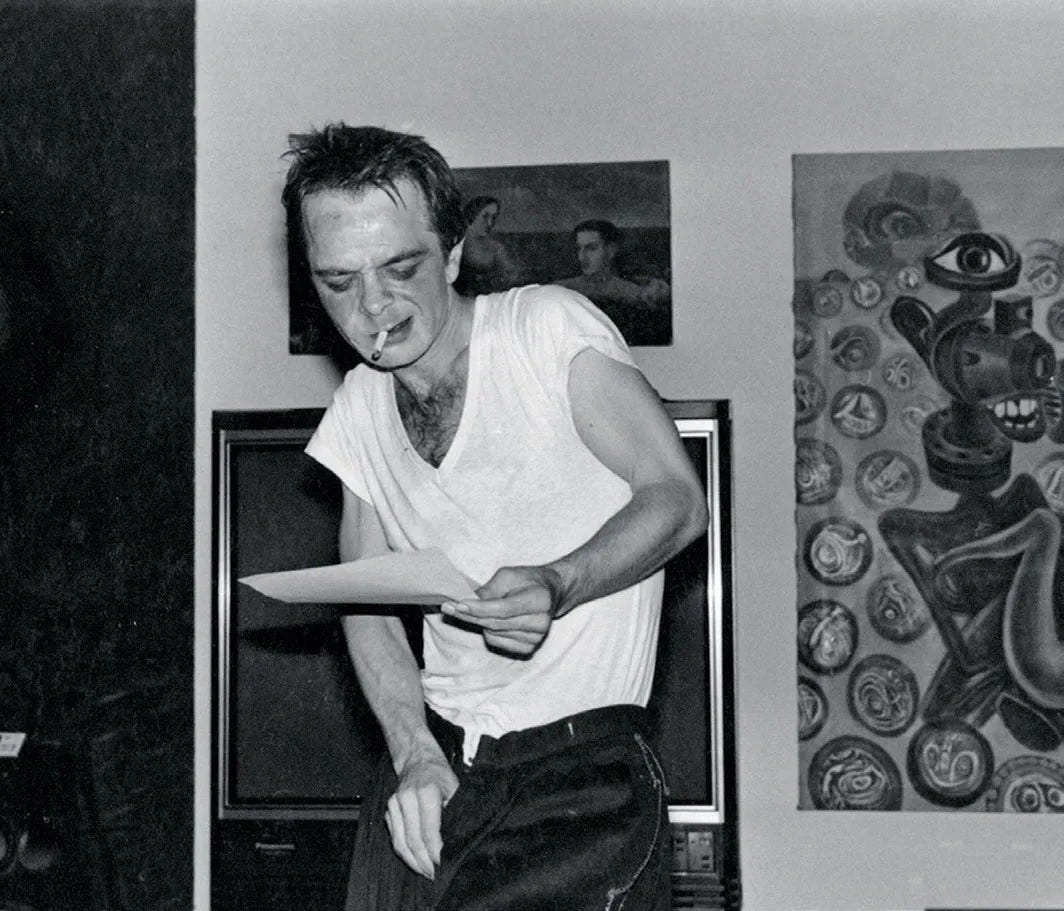On prescriptiveness
The art we encounter is overly predetermined and predictable – it doesn’t have to be like this
Gary Indiana, Paris, 1981. Photo: Jean-Jacques Schuhl.
Someone asked me recently why I was bored with art, and I said it was probably more of an issue with the art world. That’s a bit of an unsatisfying answer because everyone, whether they’re connected with it or not, likes taking a potshot at the art world.
I’ve been trying to unpack these thoughts a little, and I think it has to do with the strange dissonance between how things are framed and contextualised, and the enormous gap between how the work actually looks or is experienced.
Writing about art for magazines invariably involves pitching an exhibition review, interview or whatever based on a press release before anything is available to see. It’s not likely that the resulting work is dramatically different from what the artist has done previously, which is totally reasonable, but these are parallel practices that are rarely acknowledged because they take place behind the scenes of the publicity machine.
A recent-ish show sounded incredible. It’s been a while since I looked over the release, but from what I can recall, I remember it made stirring connections between the history of cinema, the surrounding architecture of the exhibition and a deep cut from the literature of sci-fi. I didn’t pitch a review at the time due to other commitments, but having done this long enough, I had a sense that it would get picked up by a lot of magazines. It did, and pretty much all the writing riffed on the layered references the artist had laid out, attempting the difficult task of summarising it in the 600 or so words of the review.
I was honestly shocked by how flat and dull the show itself was, especially since everyone writing about it seemed swayed by what had been promised. There were a few bits described as an installation, but it’s more accurate to say there were some wall-based pieces and a singular piece of furniture. I’m not complaining about Conceptualism or formally reductive practices more generally, as I think this tendency is quite distinct, and I also want to make it clear that my charge is that there is a lack of thinking behind such projects – the excess is not found in rigour or research, but in what is being claimed. The art is not overburdened by the text, it is almost irrelevant to it. The real centre of gravity to the exhibition is the press release. Form follows nothing – it is an excuse for the proposal and publicity.
The gap between how art is encountered and distributed points to the overlap between individual artists and the institutions that they navigate, but also the economic and social structures that shape the context of their work. It is likely that the object may not even exist before its justification has been penned – the stranglehold of experience and meaning begins in the first stages that the artwork is created, which is the plethora of applications for grants, residencies and everything else that underpins its creation.
In the gap between the object and its message, it's often not particularly clear what is being said about the Big Topic – eg. climate crisis, colonialism – and the specifics of the work, so the argument in the writing hangs wearily between the macro and micro, never fully landing on the specificity of the artwork and its relationship to the research that underpins it. I’ve come to describe this as a crisis of prescriptiveness in art, which operates like an iron cage of meaning around the object and artist’s practice – there’s little space for any conversation or discovery when everything is so pinned down and constrained, let alone a moment to experience the work itself.

